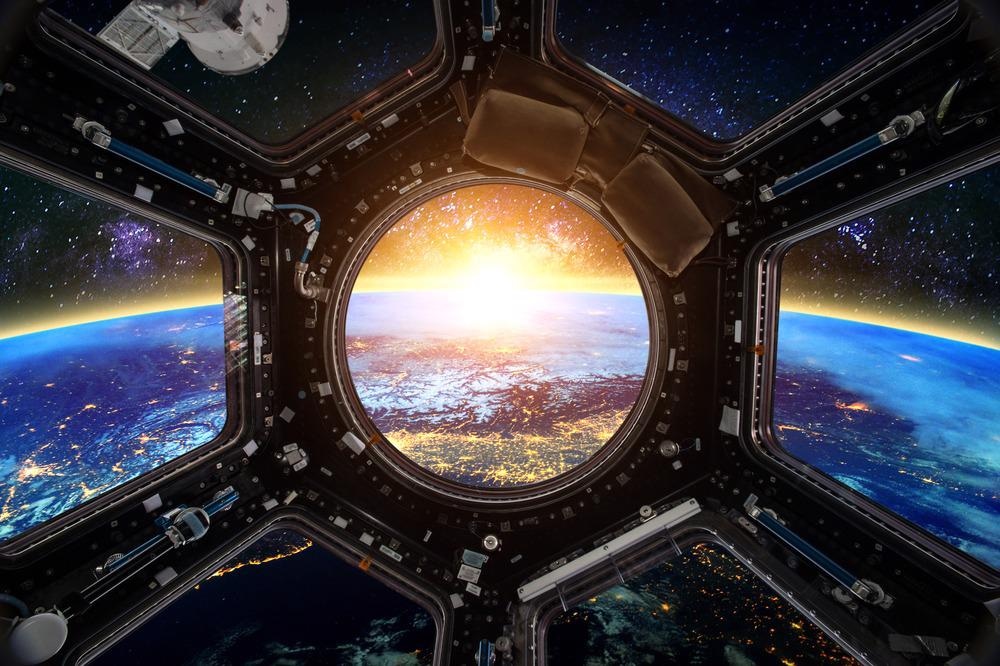
Image Credit: Guitar photographer/Shutterstock.com
A Breakthrough in Ceramic Production in Space
New market leader in mission-critical space systems, Redwire, has accomplished a world-first in successfully creating a set of ceramic components in space via 3D printing. In December 2020, a Ceramic Manufacturing Model (CMM) accomplished this feat, representing a significant milestone for ceramic production in space.
Redwire was established in June 2020 when private equity firm AE Industrial Partners combined two companies it had newly acquired, Adcole Space and Deep Space Systems (DSS).
RedWire is uniquely positioned to develop cutting-edge solutions to solve today’s biggest challenges facing space missions. Redwire has emerged as a leader in mission-critical space solutions and is a trusted manufacturer of components used in next-generation space systems. The company provides end-to-end solutions, helping to further the future of space missions.
In its latest development, Redwire has announced its success of its CMM at 3D printing ceramics in space via the manufacture of a single-piece ceramic turbine bladed disk (blisk) alongside a set of general material test coupons.
The pre-ceramic resin components are a testament to Redwire’s SLA 3D printing technology, demonstrating its efficacy at conducting fully autonomous 3D printing onboard the ISS.
The accomplishment represents a landmark occasion for space-enabled manufacturing and will pave the way for future developments in the field, likely facilitating 3D printing ceramic components in space. The work undertaken by Redwire may prove to be a significant step towards establishing sustainable living and working in space.
The Ceramic Manufacturing Model Developed with NASA
Redwire’s CMM was developed by Made in Space, an industry leader in developing in-space manufacturing and assembly technologies. Now in the hands of Redwire, the CMM is the first SLA 3D printer that has been successful in manufacturing objects in space.
Redwire aims to demonstrate the multitude of benefits that ceramic manufacturing in microgravity provides.
The team at Redwire believes that the CMM can produce ceramics in space resulting in products of high-strength, excellent heat resistant properties, lower residual stresses, and enhanced mechanical performance in comparison to components manufactured on Earth.
Various structures could benefit from using these improved components, such as combustion engines, nuclear cores, and turbines, where even the most minimal improvement to strength can translate to significantly greater longevity of the component’s lifespan.
The CMM is the first SLA printer ever to operate in orbit and could dramatically improve the output of ceramic production in space.
Redwire has demonstrated that its commercially developed in-space manufacturing facility can operate completely autonomously using additive stereolithography (SLA) technology to 3D print a single-piece ceramic turbine blisk and a set of material test coupons. These components will be sent down to Earth for analysis via the SpaceX Dragon CRS-21 spacecraft. Further research will hopefully reveal the component’s enhanced properties.
NASA’s Johnson Space Center was employed to help develop the CMM, with its ISS Research Integration Office engaged in the project that plans to further the capabilities of low-Earth orbit manufacturing by producing high-value products for terrestrial use.
The CMM is one of three solutions that the project aims to create. In 2016, Made In Space revealed the CMM’s SLA printing technology's efficacy via several parabolic flights funded by NASA’s Flight Opportunities program. Since these initial flights, much work has been conducted to resolve the issues revealed by the tests in relation to resin-based additive manufacturing, such as non-uniform shrinkage and part porosity.
Advancing 3D Printing Ceramics in Space
Redwire’s CMM project's success is a significant step towards reaching a scenario where 3D printing ceramics in space could be conducted at full-scale, and industries on Earth could reap the benefits of accessing materials with enhanced properties.
Production of the blisk and test samples while in orbit proves the concept that ceramics can be realistically manufactured in space. The project's success will likely boost demand for components 3D printed in space, as awareness and understanding of the benefits grow across industries.
The next steps will see Redwire run a thorough analysis of the components on Earth. The analysis results are predicted to prove the superior quality of the space-manufactured components and further increase interest in space-produced products. More tests will likely run to establish how large-scale production could occur and explore the range of components that can be manufactured in orbit. Space-manufactured parts may eventually become commonplace across industries in the coming years.
References and Further Reading
Heritage and Innovation. Redwire. Available at: https://redwirespace.com/about/
Redwire acquires Made In Space. Jeff Foust. Space News. Available at: https://spacenews.com/redwire-acquires-made-in-space/
Redwire 3D prints first set of ceramic components on board the ISS. Kubi Sertoglu. 3D Printing Industry. Available at: https://3dprintingindustry.com/news/redwire-3d-prints-first-set-of-ceramic-components-on-board-the-iss-180764/
Redwire Technology Successfully Manufactures Ceramic Part in Space for the First Time. Redwire. Available at: https://redwirespace.com/2020/12/02/redwire-technology-successfully-manufactures-ceramic-part-in-space-for-the-first-time/
Disclaimer: The views expressed here are those of the author expressed in their private capacity and do not necessarily represent the views of AZoM.com Limited T/A AZoNetwork the owner and operator of this website. This disclaimer forms part of the Terms and conditions of use of this website.